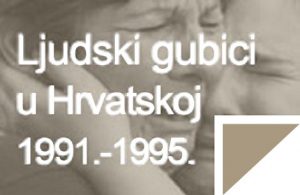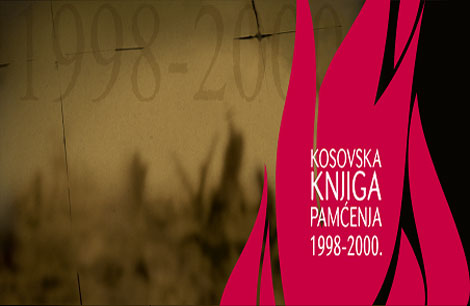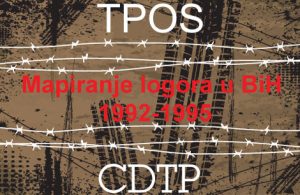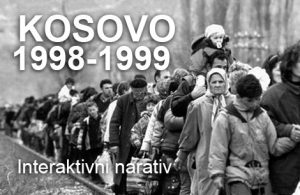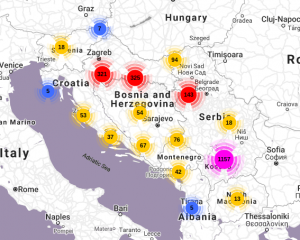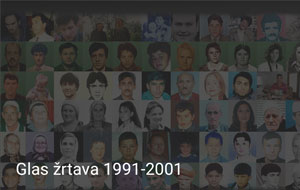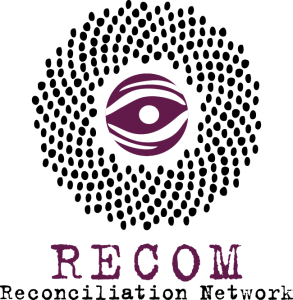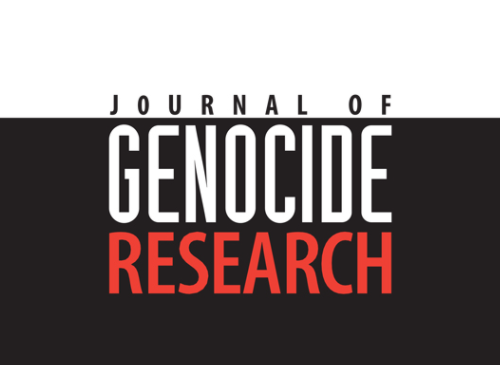
29.04.2022.
Renationalizing Memory in the Post-Yugoslav Region
Journal of Genocide Research, Lea David, memorialization, Memory Politics, Tamara TroštVolume 24, 2022 – Issue 2: Special Issue on “Patriotic History” and the (Re)Nationalization of Memory
The post-Yugoslav region is frequently taken as a textbook example of how states can harness the past as a tool for the needs of the present. Extensive research has documented the usage of history in mobilizing ethnic conflicts in the region, and particularly how the memory of World War II (WWII) was harnessed to rally ethnic animosities during the 1990s wars.1 Up until Yugoslavia’s breakup in 1990, the member states had shared an official history based on socialism, Yugoslavism, “brotherhood and unity” of the national groups, and the common, anti-fascist partisan victory against the Axis powers in WWII. This shared history began fracturing in the late 1980s, and disintegrated in the 1990s, as each new post-Yugoslav state embarked on a process of national “rediscovery,” which involved re-writing history from a new, national, standpoint. The process of national redefinition, and harnessing fragments of history that support this new national vision, continued (and continues) from the 1990s through the consolidation of statehood in the post-Yugoslav states until today.
In this piece, we demonstrate that strengthening the myth of nationhood was the primary function of the massive U-turn shaping historical revisionism in the post-Yugoslav countries, purposely obliterating the shared common past and disconnecting it from the Yugoslav legacy.2 The process of affirming statehood, nation-building, and “rediscovering” a new national history necessarily meant revising all facets of history to support and confirm this new narrative. While this process unravelled in different ways in each of the post-Yugoslav countries, several trends are observable across the region: the “rediscovery” of state roots in the middle ages that allowed the nations to assert their antiquity, descent, and territory, typically accompanied by a “golden age” signalling its past glory and presenting a continuous, uninterrupted historical existence; the reinterpretation of the Holocaust through a lens of victimization and responsibility avoidance, relativization of fascism, anti-communism and the erasure of the common memory of Yugoslavia; and selective interpretation of the 1990s wars, which established the nation as victims and martyrs, never perpetrators, and normatively placed the nation on the “right” side of history.
While the representatives of the nation-state have both the authority and resources of the state’s hegemonic power to promote an “official” historical narrative, other social and political actors have the power or interest to engage in the process of public memory-making. The historical narratives these mnemonic agents promote either conform to and support the dominant (hegemonic – public) narrative, or they express a range of “counter-memories” that are typical for sub-national and marginalized social groups.3 These groups are either cohesive enough to assemble an “oppositional narrative,” or they have reached the public sphere, but are not yet established within the current official memory framework, with fewer resources and less ability to influence dominant narratives (“sectional narratives”).4 The actual work of memory politics, regardless of whether the strategies challenge or support official strategies, and whether or not they result in changes to the hegemonic narrative, is thus a multi-scalar process, occurring at several levels and by a multiplicity of actors: official memory politics (official commemorations, history textbooks, the national anthem, official calendars of public holidays); local or municipal government politics (e.g. street renaming, removal or installation of monuments); as well as grassroots and vernacular memory-making by civil-society agents.5 These processes are in turn affected by other processes in the international arena, including the accession to the EU and conformance to EU memory laws, which allowed for the “EU washing” of responsibility for past crimes,6 as well as trials at the International Criminal Tribunal for the former Yugoslavia (ICTY), which were co-opted by memory politics serving national agendas.
Despite the multiplicity of actors and the multi-level nature of memory politics, memory actors at the official level frequently have more power in shaping the hegemonic narrative, given the large arena, multiplicity of memorialization sites, and resources available for perpetuating their chosen narratives. Because of this, powerful official infrastructures of memory and memorialization practices that set the trends to homogenizing patriotic projects tend to spill out to popular culture, resulting in a hegemonic understanding of the past. Our analysis below thus focuses primarily on nationalizing memory at the official (state) level, though we also comment on the role of non-state actors and international processes in supporting or opposing state memory politics, as well as their manifestation in popular culture. We focus on the main areas where history was renationalized for the purpose of constructing nationhood in three of the post-Yugoslav countries: Bosnia and Herzegovina (BiH), Croatia, and Serbia. We demonstrate how the tension between these two processes – rewriting history to consolidate new nationhood narratives, while adjusting to international processes – leads to a complication of memory politics, but also new forms of memory instrumentalization for national agendas.
Rediscovery of State “Roots”
As Anthony Smith explains, claiming antiquity, or an early, first, and uninterrupted continuous presence in the area inhabited by members of the nation is one of the key components of nationhood myths.7 In the post-Yugoslav region, this largely meant “rediscovering” an ancient past, along with emphasising the “golden era“ of the nation. In Serbia, this included a focus on Serbia’s greatness in the twelfth to fourteenth centuries, simulating continuity by presenting an image of the state as powerful and strong as in the time of the Nemanjić kings.8 In this narrative, the medieval Serbian state existed for centuries, belonging politically as well as culturally to the Byzantine system, with a golden age in the fourteenth century,9 and largely centres around St. Sava, Stefan Nemanja, and tsar Dušan the Mighty, invoking the “old Serb imperial dream of state expansion across the Balkans, restoring borders from the fourteenth century.”10 The insistence on the Nemanjić dynasty in official narratives, such as textbooks, is mirrored even more extensively in the public sphere. Many new monuments have been built, most notably the imposing twenty-one-meter monument to Stefan Nemanja in the centre of Belgrade in early 2021, regarding which historian Danilo Šarenac commented: “the size of this monument is almost proportional to the misuse of the middle ages for the needs of the present.”11 In 2017, a television series, titled “Nemanjić dynasty: the birth of the Kingdom,” was launched by the Radio Television of Serbia in a specific call for screenplays to mark 800 years from the creation of the Kingdom of Serbia; its filming represented one of the largest production projects in the history of Serbian television.
Similar processes occurred in Croatia. As early as fourth grade, Croatian children learn in school that the Croats arrived in the country that is presently Croatia in the sixth century, with the period between the fifteenth through seventeenth centuries titled “the century-long struggle for preserving independence,” and symbolic discourse such as the “millennial dream” or “several hundred-year long struggle” appears already in these lectures on early historical periods. The presence of the early Croatian state is later used in supporting the claim that “Croatia already had its statehood partially even before 1991.”12 In this new narrative of uninterrupted statehood, medieval kings – most notably King Tomislav, Dmitar Zvonimir, and Petar Krešimir IV – as well as various revolts and victories (glorification of the Peasant Revolt and hero Matija Gubec), take the forefront, carrying imagery of a golden age, heroism, and power, and supporting the aim of maintaining continuity between the past and the present.13 This imagery is present not only in official historiography, but is supported in the public sphere by Croatian government leaders in their visits to and speeches at the commemorations, and in street names across all major Croatian cities.14 Another historical feature that witnessed a comeback is the medieval Glagolitic script, used between the ninth and nineteenth centuries, as the “first script in which Croats wrote in their mother language.”15
The situation differs in Bosnia. As opposed to Serbia and Croatia’s trend of using the middle ages to point to their antiquity, glory, and continuity, the first topic to be re-visited in Bosniak historiography was the Ottoman past. Unsurprisingly, the Bosnian-Serb and Bosnian-Croat narratives follow the narratives in Serbia and Croatia proper and, accordingly, both have critical views of the Ottoman past, which is described as “the worst of all periods,” including massive forced Islamization. Bosnian Croat textbooks additionally blame the Ottomans for preferring Orthodox Serbs over Catholics, and conspiring with them against the Catholic Church.16 Bosniak textbooks, by contrast, describe the early Ottoman Empire as an advanced and organized civilization that brought sophisticated culture, architecture, and art to the region, and led to a thriving multicultural and multi-religious society. Islamization is described as a peaceful process, and the struggle for the idea of Bosnia is emphasized already in lessons on the downfall of the empire.17 Where streets in Sarajevo are concerned, many new street names refer to events and figures connected to the sovereignty of BiH, such as Obala Kulina Bana, Herzeg Stjepan, and largely local statespeople from the Ottoman and Austro-Hungarian periods, all “with the intention of illustrating a long-standing autonomy that predates even the Ottoman period.”18
Reinterpretation of WWII and the Holocaust
The main area where history was renationalized during and following Yugoslavia’s disintegration was the events surrounding WWII, the Holocaust, and the internal strife in the region during the war. WWII events were reinterpreted to fit the preferred (new) nationhood narrative, by cherry-picking WWII facets that were crucial for the new idea of nationhood. This meant redefining actors from fascists and fascist collaborators to anti-fascists and national heroes, reframing the interpretation of central events, and adjusting the broader interpretation of what the Holocaust represents. The Manichean narrative propagated by the socialist government of only one “good” side (the anti-fascist partisans) and one “bad” side (all other fascists and their collaborators, including ustaše, četniks, the Ljotić and Nedić movements)19 fractured into a multitude of national narratives.
For Croatia, this meant justifying its support for the Axis powers and the establishment of the fascist Independent State of Croatia (ISC), while simultaneously presenting itself as a victim of crimes committed by Tito’s partisans. By submerging the creation of the fascist ISC into the broader narrative a long-awaited statehood – as the millennial thread of Croatian statehood had been severed under the greater-Serbian regime’s attempt to destroy all signs of Croatian nationness – crimes committed during the regime and by ustaša are relativized. This includes downplaying the extent of suffering at Jasenovac concentration camp: in one particularly egregious 2004 textbook, it is described as a place where people died from poor hygiene and infectious diseases, while in all textbooks, it includes Croats in the list of victims, attempting to evade responsibility for the committed crimes.20 Bleiburg, a place where a large group of soldiers, including some civilians, associated with the Axis powers was executed by the victorious partisans in 1945, reappeared as a pivotal historical event both in official historiography and in public memory: presented as a “tragedy of the Croatian people,” it necessarily involved “nationalizing” the victims. Instead of being a place of execution of war prisoners, largely ustaša, it became a place of suffering of innocent Croatian people, priests and other believers who died because they were Croats. Bleiburg thus changed from an event remembered mostly by political émigrés into a “symbolic ritual for all Croats who had sacrificed themselves for the Croatian state, under the aegis of the Sabor yet essentially directed by the right-wing political forces pushing for a rehabilitation of the ustaša.”21 The state itself frequently funded these commemorations, and official state representatives participated,22 which is particularly problematic as ustaša paraphernalia are displayed and sold at the commemorations.
As opposed to Croatia, where the consolidation of this narrative occurred already in the early 1990s, the road of revisionism was less straightforward in Serbia, as it remained “schizophrenic” in combining elements of both socialism and nationalism throughout the 2000s. Thus the process of re-writing WWII in Serbia occurred gradually, strengthening and solidifying over time. It began with placing Jasenovac as the Holocaust of the Serbs at the centre of the historical narrative (while still affirming partisans as the ultimate “good guys” in the war), later continued with gradually reframing the četniks as anti-fascists who fought side by side with the partisans against the Axis powers, including the official rehabilitation of their leader Draža Mihajlović by the Serbian courts in 2015, and currently includes relativization of movements that explicitly supported the fascists (e.g. the Nedić movement). As might be expected, the crimes of the ustaša are covered in extensive detail in history textbooks; the knowledge and support of ustaša by the Catholic Church are frequently emphasized; as is the especially bestial nature of ustaša crimes that surpassed the ruthlessness of the Germans, was committed by “organs of the Croatian state itself” and started before the Holocaust even began in Nazi Germany.23 As with Bleiburg for Croats, victims have also been “nationalized”: there is the continued insistence on the explicit nature of Serbian suffering, even to a point of downplaying the importance of the Holocaust in general. In effect, Jasenovac is for the Serbs used to “counterbalance Srebrenica and insist on Serb victimhood,” and the inherently anti-fascist, anti-genocidal nature of Serbs.24 In both cases, the overall framing of the Holocaust is aimed at addressing the demands of the human rights regime posed by the international community (described in greater detail below), and in practice, whenever the Jews are mentioned in the official rhetoric, they are used to frame perceptions of victimhood (in Serbia) and avoid responsibility (Croatia)
In addition to changes to official historiography, hundreds of WWII monuments and memorial sites were destroyed and defaced during and after the wars of the 1990s. For example, the Alliance of Anti-Fascist Fighters of Croatia detected 2964 monuments and memorial sites which were either “demolished or desecrated and removed” between 1990 and 2000, and in general, the erasure of the partisan past was most prominent in Croatia and Croatian-dominated territories in BiH.25 Monuments in Serbia initially met a better fate, as Milošević had tried to promote Serbia as the successor of the Yugoslav legacy, so, although commemorative practices ceased to exist during the 1990s, memorial sites suffered from neglect rather than being damaged and defaced as in Croatia. In BiH, partisan monuments suffered the most damage, including the mining and blowing up of the Makljen monument five years after the end of the war in Bosnia. However, the official Bosniak narrative nonetheless still portrays the partisans most positively of all of the post-Yugoslav republics, as the only genuine, pan-national anti-fascist movement.26
These nation-centred revisionist tendencies have been accompanied by the adoption of the EU memorialization agenda, followed by an instant and extensive artificial promotion of the Holocaust memory.27 The sudden burst of Holocaust memory enforcement in the Western Balkans should make us apprehensive since the Holocaust per se had almost been unrecognized in the former Yugoslavia. In socialist Yugoslavia, as in other communist countries, the suffering of Jews was interpreted as a generic manifestation of the broader terror regime instituted by the Nazis against the civilian population. As a result, Jewish victims of the Holocaust were, for the most part, subsumed under the category of “victims of fascism.”28 We see for example, that Croatia became involved in Holocaust-related activities on multiple levels, including a Day of Remembrance of the Holocaust (27 January, commemorated since 2003), the International Day of Remembrance of the Roma Victims of the Holocaust (2 August), Anti-Fascist Struggle Day (22 June), and the April commemoration at the Jasenovac Memorial site. Those are followed by numerous educational activities, regional and national seminars, and thematic museum exhibitions as part of the 2005 Croatia’s membership in the International Holocaust Remembrance Alliance (IHRA). In Serbia, the revival of the memory of the Holocaust has followed a similar pattern. Amongst others, Serbia has observed Holocaust Memorial Day on 27 January, since 2007; on 5 October, an official event takes place to commemorate the suffering of the Serbs, Jews and anti-fascists at the Jajinci execution site; WWII Victims Remembrance Day on 21 October and the International Day against Fascism and Anti-Semitism on 9 November. However, the most important day is 22 April, the Day of Remembrance for all of the victims of the Holocaust, genocide and other victims of fascism in WWII, annually commemorated at the Jasenovac memorial site in Croatia since 2014. The overlapping of the commemorative calendar at the Jasenovac site between Croatia and Serbia, both of the state-led commemorations and those organized by the Jewish communities and other pro-European actors, often produces clashes and multiple narratives on what is in fact being commemorated, by whom, and why. Since Serbia’s acceptance into the IHRA in 2011, just as in the case of Croatia, various Holocaust-related activities, such as educational seminars and museum exhibitions, have been actively promoted through numerous school textbook lessons across multiple disciplines.29
Even in BiH, which is far behind in Holocaust memorialization and education, there have recently been significant efforts to promote Holocaust remembrance, such as a large-scale project launched to promote Holocaust education in 2013. However, “the country is still in the process of building a viable education system and Holocaust education is not its current priority.”30 This largely artificial focus on the Holocaust is used as a valuable public signifier of moral boundaries that should enable access to the European free market, in particular for the countries still waiting to enter the EU, such as Serbia and BiH. The use of Holocaust remembrance was placed in the service of national interests that enabled the framing and promotion of one’s own victimization. Thus, just as with the revisionist agenda, the intensified memorialization of the Holocaust has proved to be just another version of a nationalist outlook.
Anti-Communism and Anti-Yugoslavism
Accompanying the revision of WWII events was the marked U-turn in how Yugoslavia was remembered. Anti-communism and anti-Yugoslavism were the central themes along which the 1945–90 period was reinterpreted. Given the need to establish a historical narrative of continuous nationhood, Yugoslavia’s existence provided evidence of victimhood and the necessity of independent statehood. This included several parallel moves: portraying “brotherhood and unity” as a way of suppressing national identity; representing Yugoslavia as an interruption to the nation’s existence;31 and changing the description of Tito from being the omnipotent leader to someone who actively worked against the nation’s interests.32 The rising post-Yugoslav nations began almost instantly in the early 1990s to declare their nationhood by occupying central public spaces and erecting monuments, promoting new national holidays and performing new commemorative practices, and one of the first legacies to be destroyed was the Yugoslav project, as the new states sought to relinquish and annul connections, symbolic and real, to this part of their past.
Indeed, as a symbolic break from the previous regime, an intense project of erasing connections with the Yugoslav past began in the early 1990s. Croatia, which declared independence in 1991 and officially became internationally recognized in 1992, was the first and most eager to annul and demonize its Yugoslav past. In a June 2021 interview, Gordan Grlić Radman, Croatian Minister of Foreign and European Affairs, explained that the Croats in Yugoslavia lived “under steadfast slavery,” without their own state and in fear of even using the word “Croat,”33 signalling the de facto erasure of Yugoslavia’s presence. Throughout the region, starting from the early 1990s, councils and committees at the city, local, regional, and national levels began changing names of streets, squares, cities, schools and public institutions to erase traces of the Yugoslav past for the sake of claiming national continuity.34 Famous partisan heroes, dates, and names resembling the socialist ideology of “brotherhood and unity,” as well as topographic references to cities in other former Yugoslav republics, were targeted and renamed to fit the newly tailored nationalist pantheon. In Zagreb and Split, two of Croatia’s largest cities, over 650 streets received new names already in the first several years after the country’s independence. Street names such as “Belgrade Street,” “Brotherhood and Unity Square,” and “Tito’s Boulevard” disappeared overnight. In Zagreb, the famous Square of Tito was finally changed in 2017 to “Republic of Croatia Square.” In the Federation of Bosnia and Herzegovina (FBiH), with Bosniak and Croat majorities, streets dedicated to Tito and the socialist past, as well as streets with names that had any connection to Serbia, were renamed. In Sarajevo alone, out of 1044 streets, 403 received new names. In the Serbian entity of Republika Srpska, both “socialist” names and those referencing the legacy of the Bosniaks’ presence were changed. In Banja Luka, the capital of Republika Srpska, out of 400 street names, 240 were altered.35
Serbia was slower in its purging of the Yugoslav past, as it straddled both nationalism and socialism through the early 2000s, with its official position during the wars was that Serbia is defending the unity of Yugoslavia. Though the main boulevard “Marshal Tito Street” in Belgrade was renamed “Street of the Serbian Rulers” in 1994, in Belgrade alone, approximately 700 streets still have names suggestive of some connection to Yugoslavia36 and in 2006, the body of the deceased Serbian President Slobodan Milošević, who died in the Hague during his trial, was presented in the museum of Yugoslavia and the House of Flowers, so that people could pay their respects and today, Tito’s mausoleum is a prime tourist attraction. Thus, while the trend of representing Yugoslavia as a fundamentally negative project from the viewpoint of the nation is firmly established in official historiography across the region, opposing, pro-Yugoslav, narratives have also been regularly promoted by non-state and grassroots actors. In Serbia and BiH, the Yugoslav legacy continues to appear on the margins of the official narrative, as expressed in art exhibitions, popular shops, restaurants names, as well as souvenirs and memorabilia sold on the street. In addition to communities of Yugonostalgia (whether authentic or for market purposes), grassroots and vernacular movements aimed at countering the erasure of the common Yugoslav past and concurrent relativization of fascism arising from the “two authoritarianisms” discourse at the official level have been active and vocal in countering the hegemonic anti-Yugoslav narratives.37 These initiatives are undertaken by a variety of individuals, groups, and civil society agents representing communities of Titostalgia and Yugonostalgia and broader anti-fascist movements, as well as occasionally by local – city or municipality level – governments, which have jurisdiction over memory-making in public spaces, such as restoring Tito’s monuments and retaining socialist-era street names in their municipalities. The contestation over the memory of Yugoslavia at the regional, local, and grassroots levels persists across the region.
Selective Memory of the 1990s Wars and Transitional Justice Efforts
As the nations declared independence and began their journey of nationhood consolidation in the 1990s, the wars of the 1990s provided another critical point to weave into the national narrative. Unsurprisingly, this has meant a drastically different version of the 1990s wars in the post-Yugoslav republics. Where in Croatia it is framed as a homeland war or a war for independence, in BiH and Serbia the definition of the war is much more contested. For Serbia, the official narrative that Serbia never participated in the wars is still prevalent and officially supported, while for BiH, the 1995 Dayton Agreement served primarily as a freeze-frame that acknowledged territorial consolidations achieved by Serbs, Croats, and Bosniaks and solidified them with a constitutional framework which made Bosnia a de facto international protectorate, which actually cemented the logic of ethnically bound divisions that further erased the mutual Yugoslav past and the legacies of socialism.
With the establishment of international tribunals to prosecute those responsible for crimes in the former Yugoslavia (ICTY in 1993) in Serbia, Croatia, and BiH, the pressure imposed by the international community (the EU in particular) was a given from the very beginning: following the wars of the 1990s, they all formally committed to the Europeanisation process. Each state’s entrance into the EU was supposedly conditioned upon, among other things, facing its criminal past of human rights abuses. The main request posed to Croatia, Serbia, and BiH by the EU was cooperation with the ICTY. The Croatian government cooperated selectively and reluctantly; nevertheless, in 2005, it successfully transferred the last ICTY indictee to the Hague Tribunal, effectively fulfilling its obligations to the tribunal. This resulted in opening Croatia’s path for EU candidacy and joining the EU in 2013. For Serbia, cooperation with the ICTY was more contested: it was only in 2008 that the Serbian government arrested and extradited Radovan Karadžić, the president of Republika Srpska during the war in Bosnia, and, in 2011, Ratko Mladić, a former Bosnian Serb military leader. For BiH, on the other hand, the establishment of the ICTY was directly linked with justice, peace and security, and was promoted as necessary of holding leaders accountable, bringing justice to victims, giving victims a voice, establishing the facts, where the ICTY was understood as a tool of peace and democracy building, but was frequently co-opted by nationalist politicians promoting their own interpretation of the ICTY rulings. Following the ICTY’s closure in 2017, war crime trials were left to the national courts in BiH, Serbia, and Croatia, where they were further discursively downplayed, marginalized, and the indictments publicly contested and ethicized.38
Along with conditioning EU accession via participation in ICTY processes, Europeanization has impacted the forging of collective memory in a multitude of ways, both at the bottom-up and top-down levels. At the top-down level, candidate countries are expected to follow the EU memory framework, which signals their alignment with EU norms of remembrance, confirms their commitment to the future in unity, and indicates their European identity.39 Memory politics are imposed by external actors and led by the EU: while there are no formal requirements regarding memory politics in the accession criteria, there is nonetheless an expectation that the candidate countries will adhere to the EU memory framework, a number of soft laws and decisions that define shared attitudes towards the past. By adhering to these decisions, the candidate countries signal their alignment with EU norms of remembrance, and indicate their European identity.40 This means, for instance, that the endorsement of the European Parliament’s resolution on Srebrenica conditions Serbia to also adopt a similar resolution within its parliament.41 At the bottom-up level, the accession process has allowed elites to co-opt the EU framework to pursue their own national agendas: as discussed above, in Croatia, this is reflected in its subsuming of Jasenovac into a broader European memory framework, what Milošević and Trošt have called an “EU washing” of injustices committed by Croats. Indeed, the “we shall never forget” framework of European Holocaust remembrance has allowed for the solidification of the narrative of the co-existence of two totalitarianisms (fascism and communism).
Discussion
Other visions of the past and future are always simultaneously present. However, in places in which national infrastructures endorse the patriotic, narrow version of the past, one that displaces accountability and responsibility for the past atrocities, those other versions that often resist the nationalist, ethnically based histories, but instead rely on transitional justice and human rights paradigms, are in most cases marginalized and reduced to intellectual and activists’ elites. Yet, although the patriotic past has been often challenged and modified through international pressures that push states to adopt the human rights memorialization agenda and to adhere to the principles of facing its own misconducts, to demonstrate duty to remember past human rights abuses, and to adopt a victim-focused understanding of the past,42 today they are simultaneously used to promote various national interests in the international and local arenas.
The overlap of those double standards, one set for the international community and the other for the domestic patriotic electorate, is best seen in popular culture. The trends described above set the stage for securing legitimacy and a wider popular response that tends to spill out to day-to-day aspects of culture, resulting in a hegemonic understanding of the past. In fact, popular culture often becomes a bridge that links the top-down state-sponsored ideals of the national patriotic past with wider audiences, transforming it into a hegemonic, narrowly bound nationalist perception that aims to set clear boundaries of the desired national identities. Those boundaries are always created and channelled in relation to the imagined enemy, visible or invisible, that are potentially fertile to spur emotions along national/ethnic/religious lines. We see, for example, vast emotional responses in BiH (in both entities), Serbia, and Croatia, around recent film releases. In Croatia, Jakov Sendler’s “Jasenovac Truth” (2016), presents a blatant revisionist version of ustaša responsibility for the Jasenovac concentration camp. As a counter-story around the contested historical relationships between Serbia and Croatia, a film by Predrag Antonijević, “Dara from Jasenovac,” funded by the government, was launched in Serbia in 2019. The following year, in 2020, a film by Jasmila Zbanić was released in Bosnia, “Qua Vadis, Aida?,” nominated for an Oscar, tells the story of the Srebrenica genocide, offering hope and prospects for interethnic cohabitation, despite the genocide committed by the Bosnian Serbs on the Bosniaks in the 1990s wars. Those films, though differing in artistic quality and ideological approaches, are all used as signifiers by the official governments to contest or enroot their own patriotic visions of their past in popular culture. The complex interconnection between the state and popular culture extends also to sports (e.g. state support for right-wing football hooligan groups)43 and music (e.g. Thompson’s pro-ustaša concerts).44 From sports events, music, local festivals, cultural gatherings, to media outlets, once there is an ideological contour and state support, popular culture further disseminates the ideas of the desired patriotic past. However, popular culture also reflects the resistance to the hegemonic memory (such as in music or collaborative multi-ethnic artistic projects) and solidarity (expressed in national competitions such as Eurovision or in response to natural disasters).
Official level narratives are thus constantly in dialogue with non-official actors who can both promote and challenge the official narrative. Where the memory of Yugoslavia is concerned, the multitude of activities at the grassroots level is well exemplified in the clash between local actors who promote the official anti-Yugoslavia narrative and those who oppose it: the organization Circle for the Square, which defines itself as an “informal civil initiative for Croatia without totalitarian symbolism in public places” actively worked for renaming Tito square in Zagreb, whereas the Association of National War Liberation Veterans and the Society of Josip Broz Tito have been undertaking various initiatives to restore and preserve Yugoslav-era street and square names across Croatia. Similar contestation is ongoing regarding the official-level representation of the 1990s wars, mostly coming from NGOs that deal with the legacies of the wars of the 1990s (such as the Humanitarian Law Centre, the Centre for Nonviolent Action, and RECOM) that counter official narratives by attempting to provide a balanced, fact-based narrative of the past. Media outlets and oppositional parties also play an important role in challenging official narratives: in Serbia, the liberal broadcaster B92 and various oppositional political parties frequently challenged and called into question the Manichean nation-centered framing of the WWII, Yugoslav and 1990s memory.
In this piece, we reviewed the ways in which history was renationalized for the purpose of constructing nationhood in the post-Yugoslav region, across the main points of construction: the “rediscovery” of national roots in the middle ages, the reinterpretation of the Holocaust and relativization of fascism, anti-Communism and the erasure of the common memory of Yugoslavia, and selective interpretation of the 1990s wars. While the role of the state is still most important in establishing hegemonic narratives of the nation, other non-state actors actively participate in promoting or opposing these narratives, while international processes such as Europeanisation and the ICTY proceedings importantly affect state memory politics. The tension between these two processes – rewriting history to consolidate new nationhood narratives and adjusting to international processes – leads to a complication of the memory politics but also new forms of memory instrumentalization for narrow national agendas.
This article was originally published with errors, which have now been corrected in the online version. Please see Correction (http://dx.doi.org/10.1080/14623528.2021.1983221)
Notes on contributors
Tamara P. Trošt
Tamara P. Trošt is an Associate Professor of Sociology at the School of Economics and Business, University of Ljubljana, Slovenia. She holds a Ph.D. in Sociology from Harvard University (2012). Her research interests include nationalism and ethnicity, memory politics, and youth values. Previously, she was a visiting professor at the University of Graz, and spent the 2015–16 year as a Fung Fellow at Princeton University. Her most recent publications include Europeanization and Memory Politics in the Western Balkans (co-editor, 2021), and various articles on history education and nationalism in Memory Studies, Nations and Nationalism, and War & Society.
Lea David
Lea David is an Assistant Professor and Ad Astra Fellow at the School of Sociology, University College Dublin. Her book The Past Can’t Heal Us: The Dangers of Mandating Memory in the Name of Human Rights was published with Cambridge University Press in 2020. She is a Co-Chair of the Critical Thinking on Memory and Human Rights Research Group within the Memory Studies Association (MSA). Her research interests cover memory and memorialization processes; nationalism; human rights, ideologies; solidarity; activism; the intersection between the Holocaust and genocide, and conflicts in the former Yugoslav countries and in Israel/Palestine.
